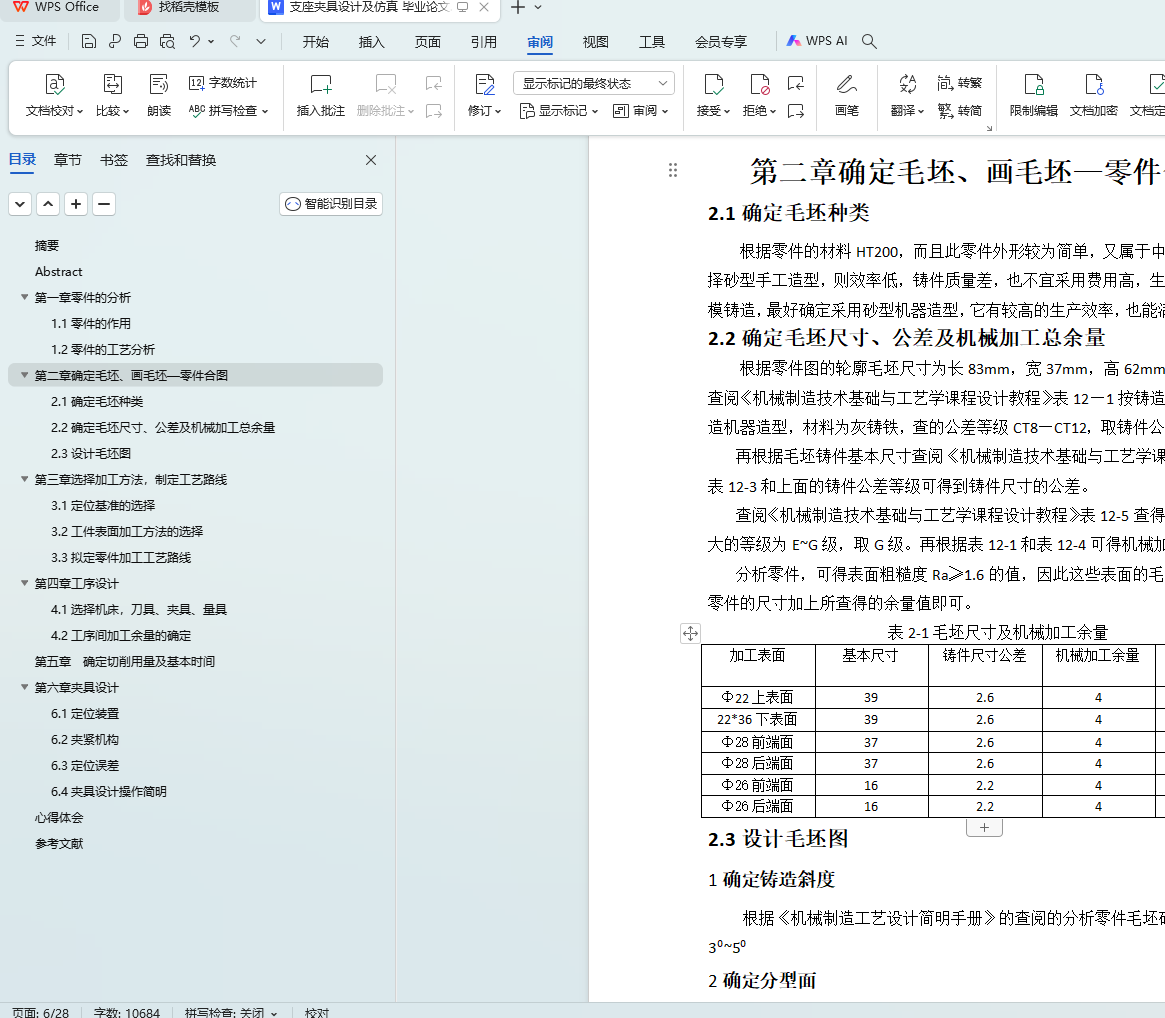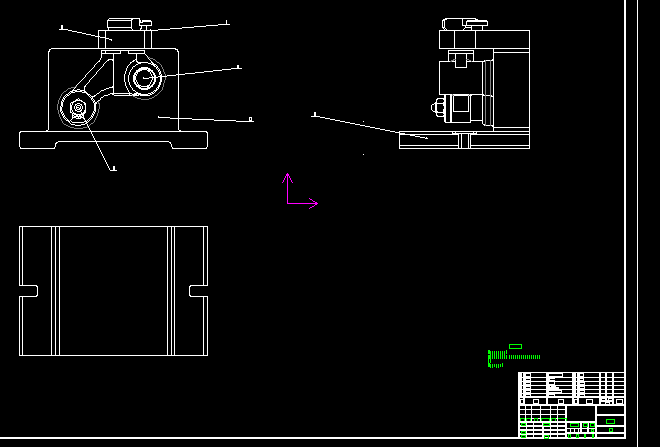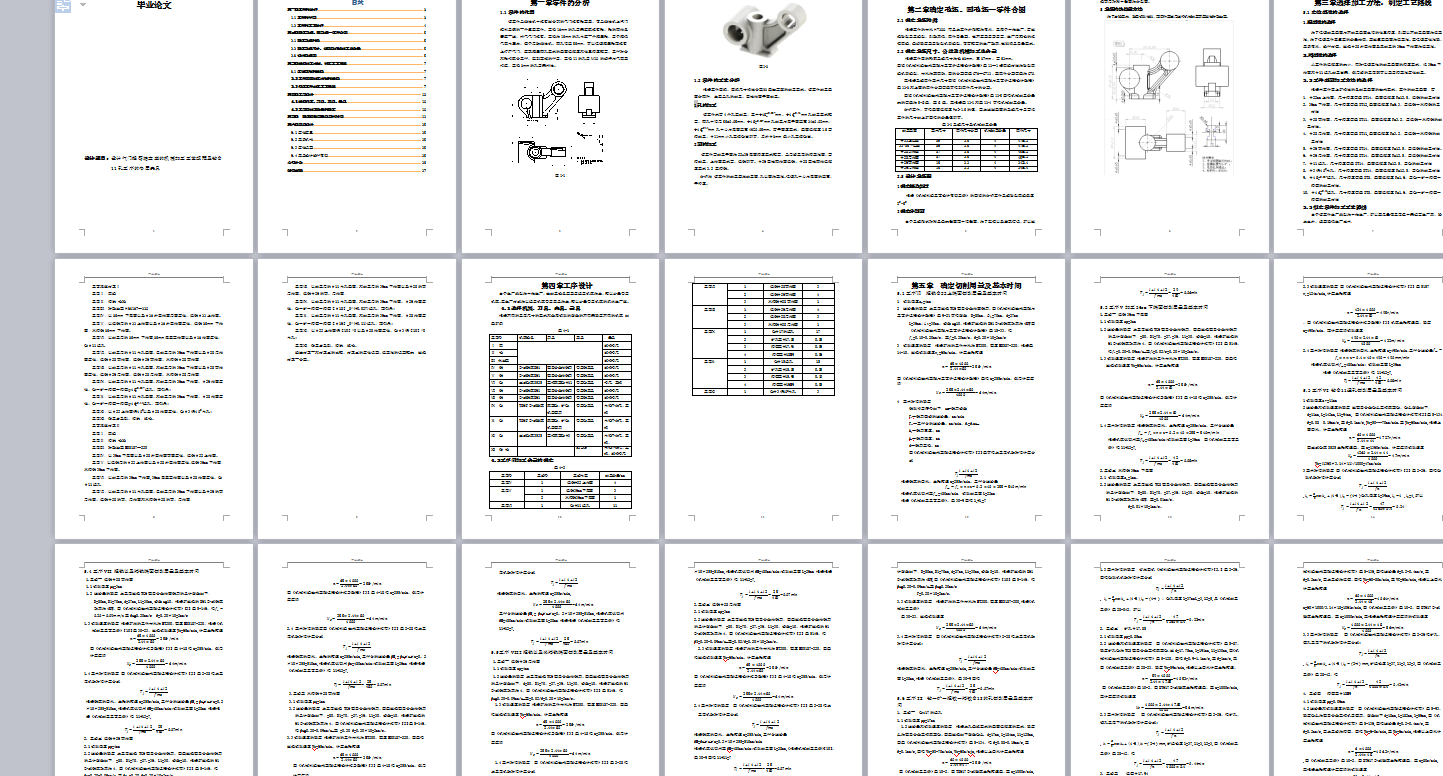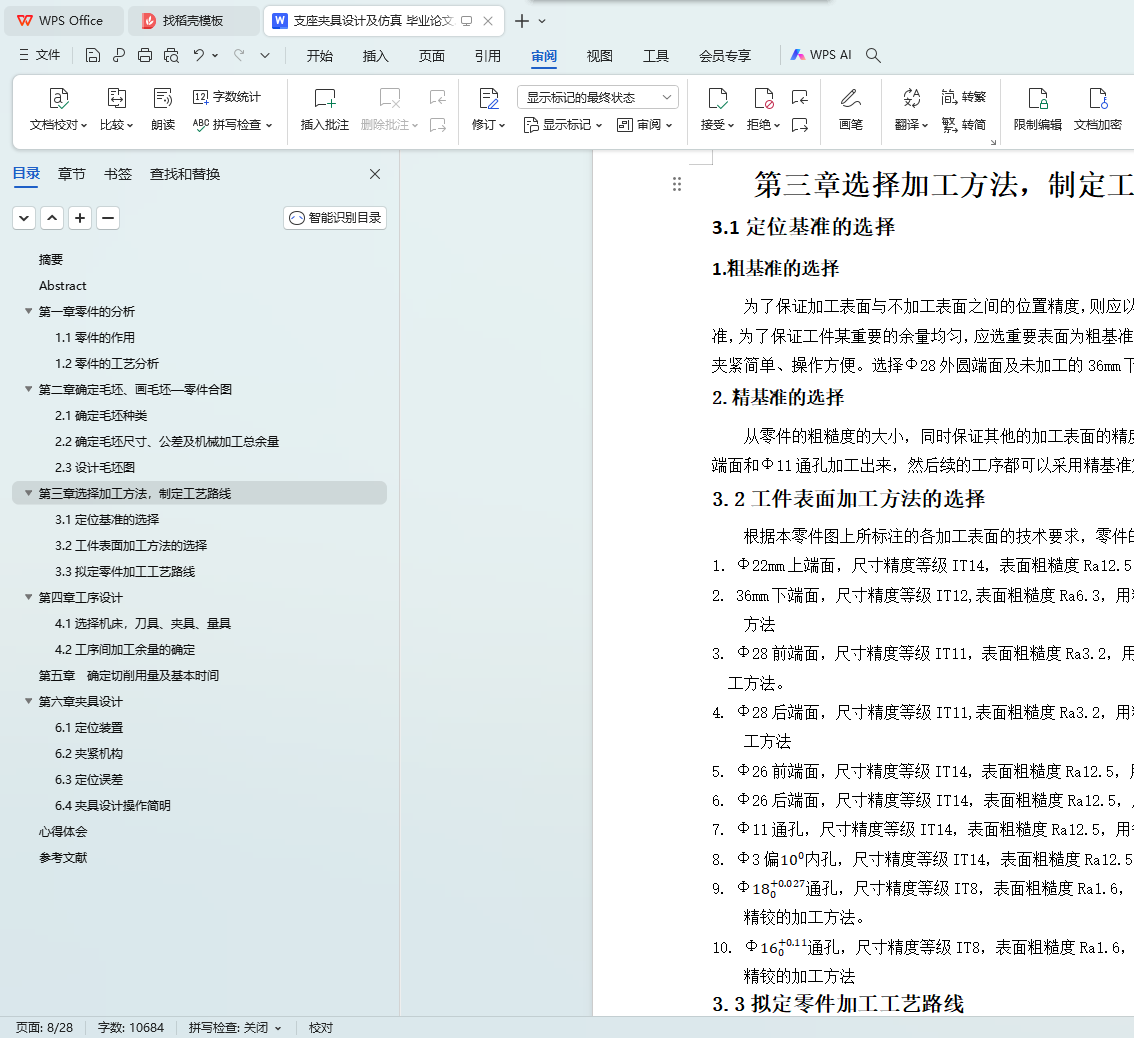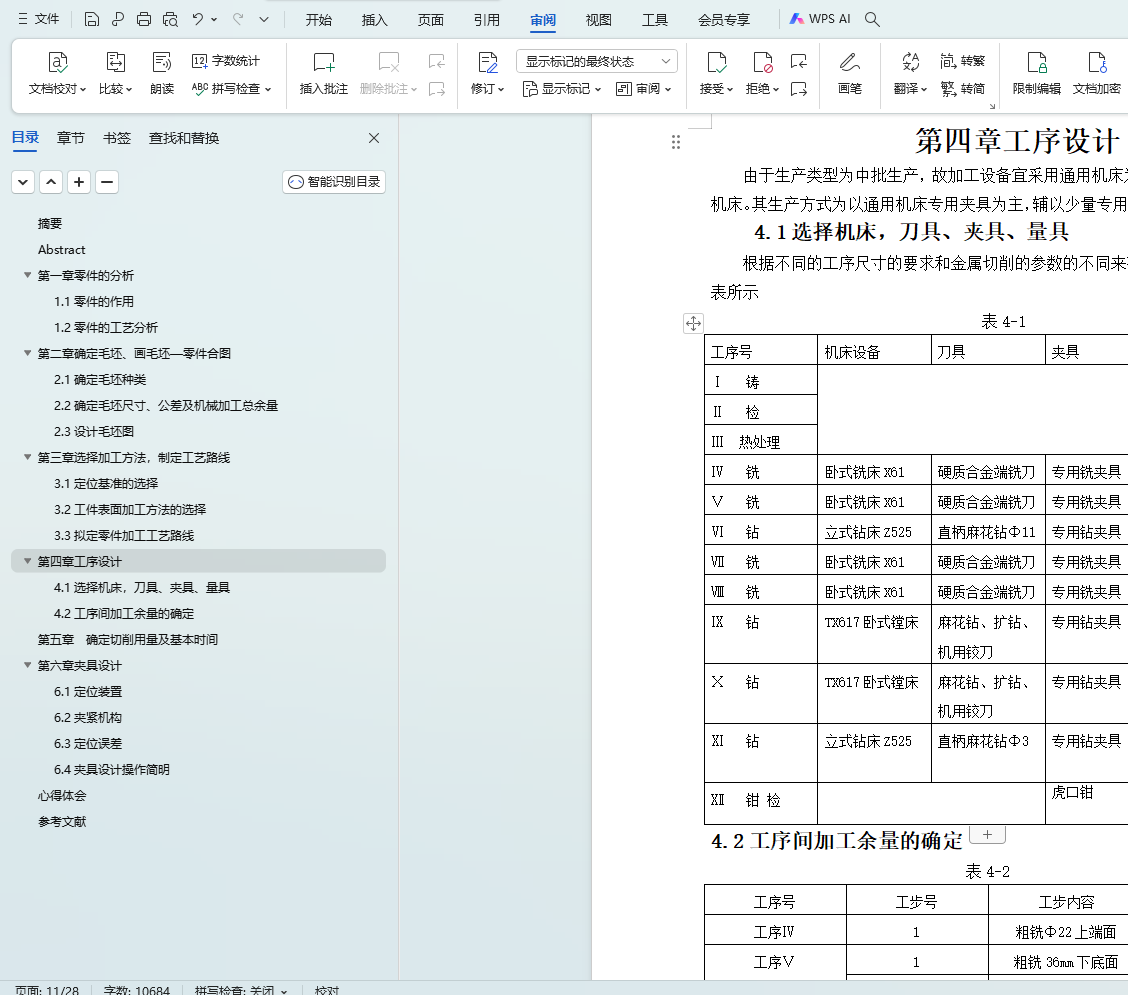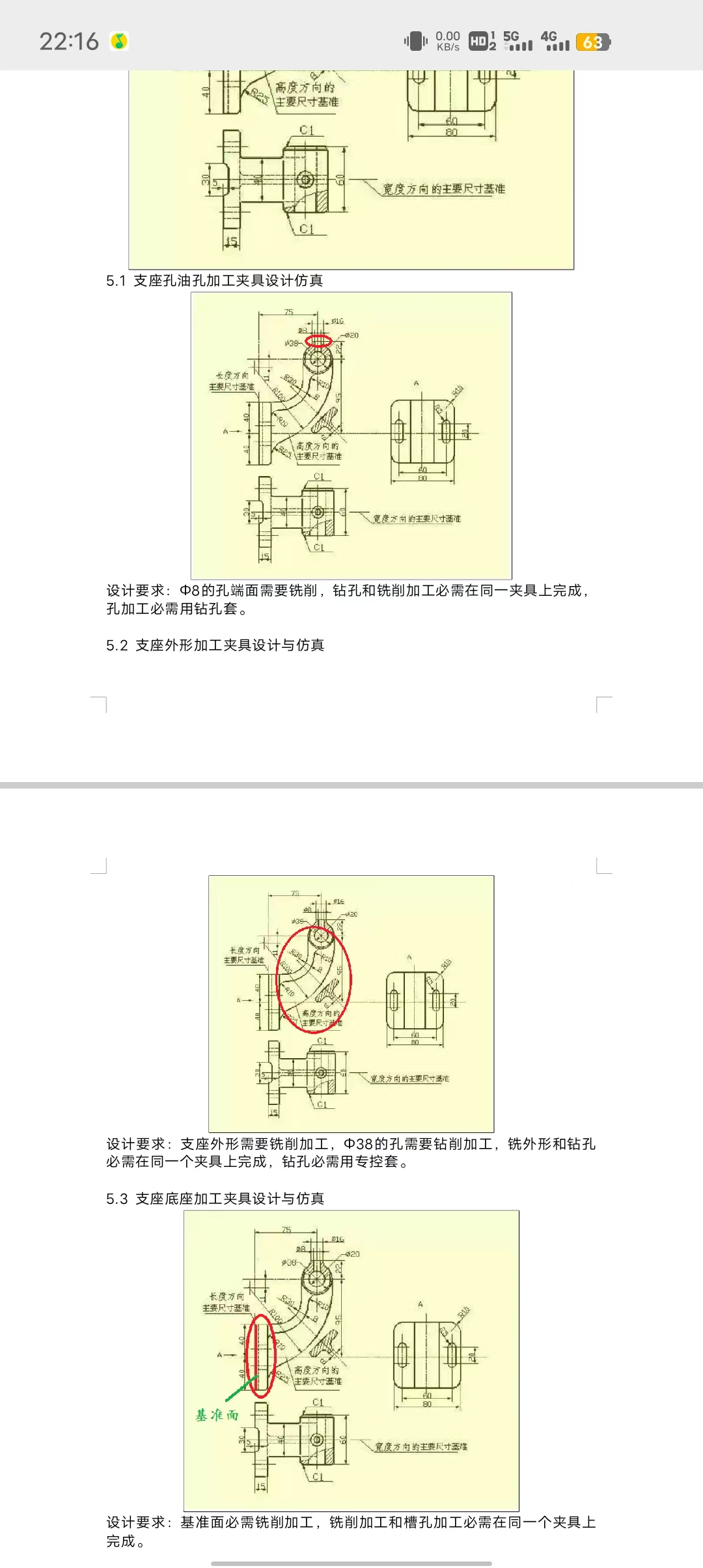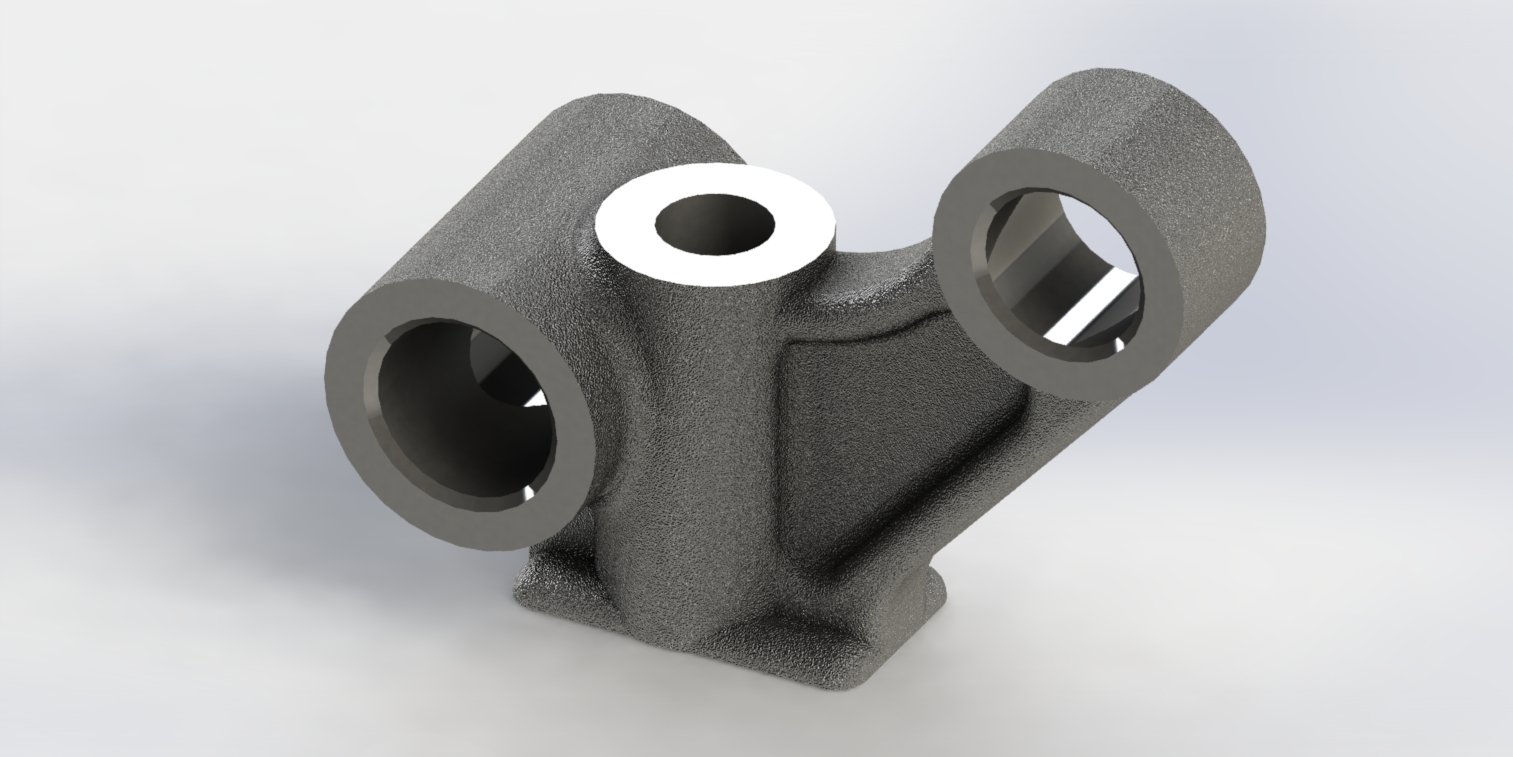摘要
本文围绕柴油机中摇臂结合部的支座夹具设计展开研究,通过深入分析零件的作用与工艺要求,明确了设计目标和难点。首先,详细阐述了零件在柴油机上汽门控制系统中的关键作用,包括支撑摇臂轴、减压轴以及连接气缸盖的功能。其次,对零件的工艺特点进行了全面分析,包括孔和面的加工要求,以及加工顺序的确定。在设计过程中,结合CAD二维图和SolidWorks三维图,对零件进行了精确的几何建模和尺寸标注。通过仿真分析,验证了夹具设计的合理性,并优化了关键结构。最终,设计出一套满足加工精度和效率要求的夹具方案,为柴油机摇臂结合部支座的制造提供了有效的技术支持。本研究不仅提升了柴油机制造水平,也为类似零件夹具设计提供了有益的参考。
关键词:柴油机;摇臂结合部;支座夹具;CAD二维图;SolidWorks三维图;仿真分析
Abstract
This paper focuses on the design of the support clamp of the diesel engine, and defines the design objectives and difficulties through in-depth analysis of the function and process requirements of the parts. First, the key role of the parts in the diesel valve control system includes supporting the rocker shaft and connecting the cylinder head. Secondly, the process characteristics of the parts are comprehensively analyzed, including the processing requirements of the holes and surfaces, as well as the determination of the processing sequence. In the design process, combining CAD 2 D and SolidWorks 3 D maps to accurately geometric model and dimension the parts. The simulation analysis verified the fixture design and optimized the key structures. Finally, a set of fixture scheme is designed to meet the machining accuracy and efficiency requirements, which provides effective technical support for the manufacture of diesel engine joint. This study not only improves the manufacturing level of diesel engine, but also provides a useful reference for the clamp design of similar parts.
Key words: diesel engine; rocker arm joint; support fixture; CAD two-dimensional diagram; SolidWorks three-dimensional diagram; simulation analysis
目录
第一章零件的分析
1.1零件的作用
1.2零件的工艺分析
第二章确定毛坯、画毛坯—零件合图
2.1确定毛坯种类
2.2确定毛坯尺寸、公差及机械加工总余量
2.3设计毛坯图
第三章选择加工方法,制定工艺路线
3.1定位基准的选择
3.2工件表面加工方法的选择
3.3拟定零件加工工艺路线
第四章工序设计
4.1选择机床,刀具、夹具、量具
4.2工序间加工余量的确定
第五章 确定切削用量及基本时间
第六章夹具设计
6.1定位装置
6.2夹紧机构
6.3定位误差
6.4夹具设计操作简明
心得体会
参考文献

